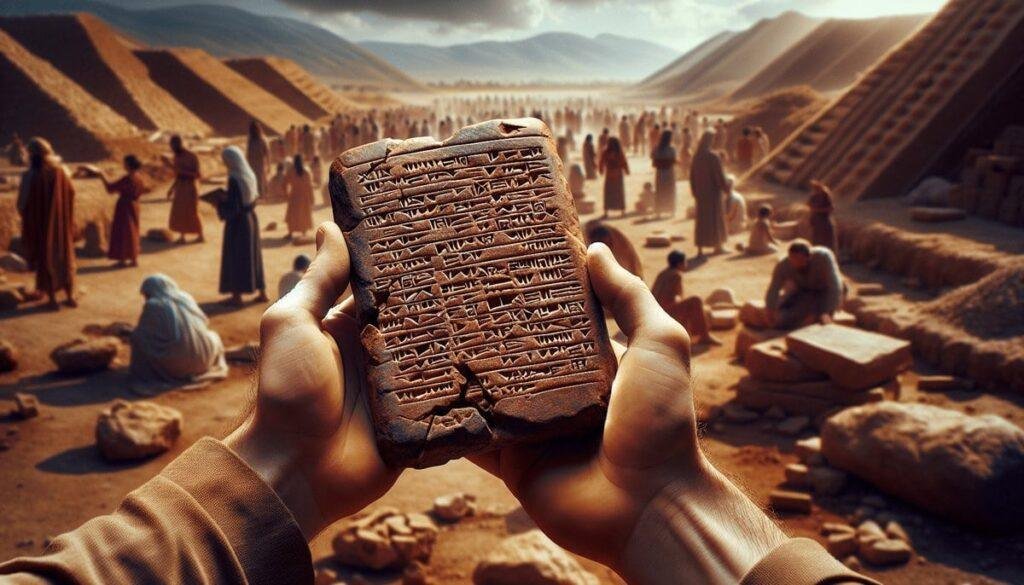Have you ever pondered the silent stories told by ancient coins? These small artifacts, remnants of the biblical period, offer more than mere monetary value; they unlock the narratives of sacred commerce that bridged spiritual and temporal realms.
Introduction
Coins from the biblical era reveal much about the economic underpinnings of ancient societies. While many view them as mundane transactions of commerce, these coins carry historical significance. They whisper tales of the people who once held them and the economies that flourished under biblical teachings. By examining these coins, we not only uncover the transactions of the past but also the cultural and religious significance that defined a sacred economy.
Discovery Context
Biblical references frequently mention trade and commerce as integral elements in the socio-economic foundation of ancient societies, often facilitated through the coins minted in the era. This first section sets the stage for understanding the biblical context in which these coins operated.
Biblical Reference and Historical Background
The Bible itself cites numerous instances of coin usage, illustrating their importance in daily and ritualistic life. From the thirty pieces of silver in the tale of Judas to the widow’s mite, coins are embedded in biblical narratives as symbols of transaction and faith. Such references provide a lens through which historians and archaeologists can gain insight into the socio-economic climate of the time.
Geographic Location and Recent Findings
Key archaeological sites tied to biblical history have repeatedly yielded fascinating coin findings. Areas in modern-day Israel, Jordan, and Palestine, among others, have been particularly fruitful. Recent excavations have uncovered coins bearing images and inscriptions from the Roman occupation of Judea, helping piece together the diverse influences in the region. These precious finds have reshaped our understanding of the biblical economy as not only local but also influenced by broader imperial forces.
Archaeological Evidence
The evidence of biblical period coins, captured through various scientific and scholarly methods, opens windows to the past. This section elaborates on the vivid discoveries made through archaeology.
Specific Artifacts and Dating Methods
Archaeological excavations over the past decades have unearthed an array of coins from different epochs within the biblical era. These coins are meticulously dated, often using stratigraphic analysis and numismatic studies. Techniques such as radiocarbon dating and stylistic comparisons with well-documented periods provide accurate timelines for these artifacts. Coins from the Maccabean monarchs, Herodian princes, and Roman emperors offer insights into the complex layers of political and cultural authority impacting biblical societies.
Physical Descriptions and Expert Interpretations
The physical features of the coins, such as inscriptions, images, and metals used, reveal a wealth of information. Copper, bronze, silver, and occasionally gold were typical materials, each chosen for specific economic and symbolic purposes. Expert analysis interprets engraved symbols, which range from royal effigies to religious icons, suggesting the societal values and hierarchies of the time. Scholars argue that the coherence in iconography across regions indicates a unified yet diverse economy, deeply intertwined with concurrent religious practices.
Significance
Delving into the implications of these discoveries underscores the profound impact that coins from the biblical period had on economic, religious, and historical narratives.
Biblical Implications and Historical Impact
The presence of coinage in biblical texts underlines a sacred association with commerce, often reflecting deeper spiritual lessons or moral tales. These coins were not just mediums of economic exchange but also employed in temple donations, symbolizing a material connection to divine favor and religious duty.
Modern Understanding and Research Status
In the contemporary arena, these finds enrich our understanding of ancient economies and the role of commerce in historical contexts. Ongoing research continues to push the boundaries of what we know, regularly unveiling new complexities regarding ancient trade networks and financial systems. The research status reveals a dynamic field brimming with potential for further discovery and interpretation.
Conclusion
In summary, biblical period coins offer a multidimensional view of sacred commerce that transcends their material existence. Their discovery allows us to reconstruct economic landscapes intertwined with profound spiritual implications. As ongoing research progresses, these coins may yet reveal more stories etched in metal, urging us to consider the enduring legacies of sacred commerce.
The call to action remains clear: to continue exploring these ancient artifacts to unearth further layers of our shared human history and its intersections between faith and economy.





